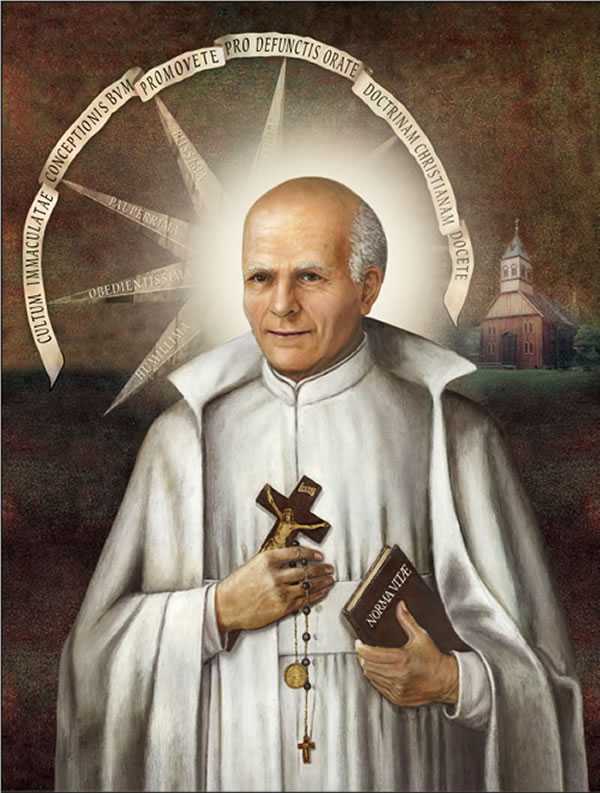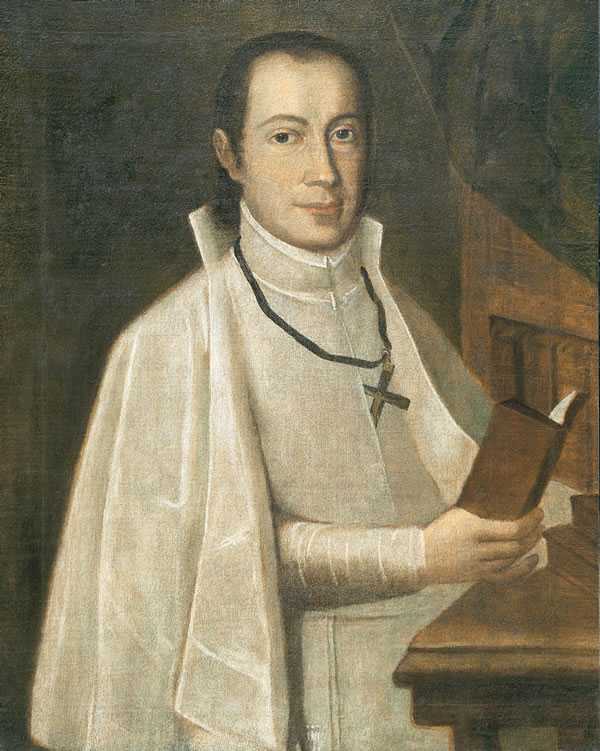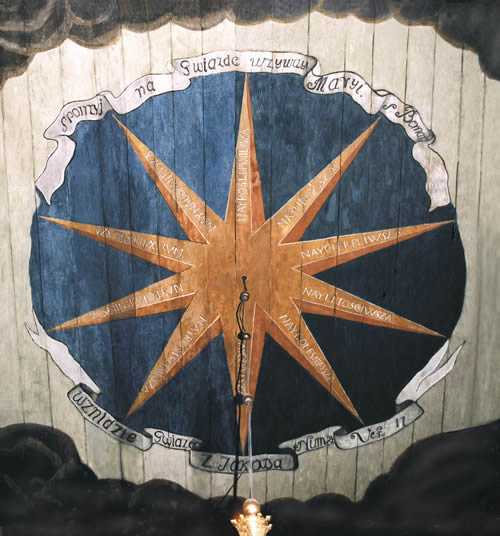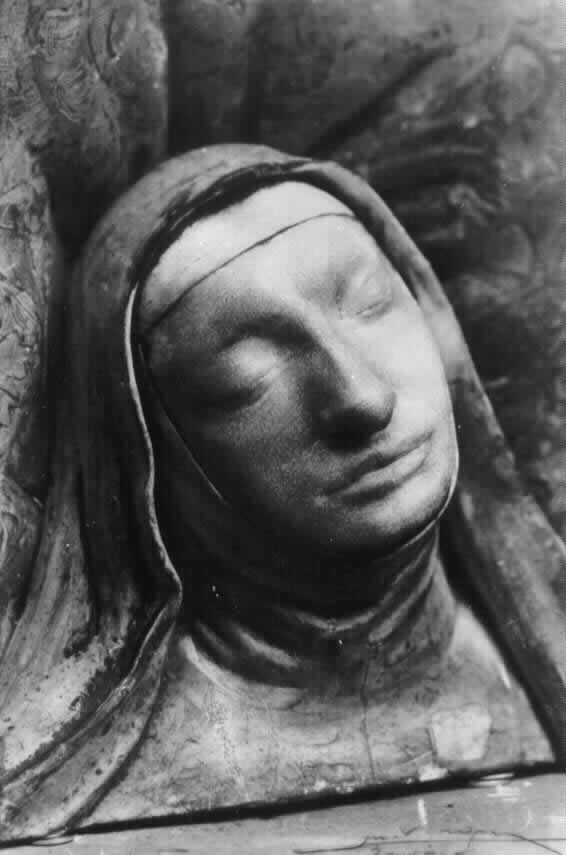The first legislator of the Congregation of Marian Fathers was its founder, Saint Stanislaus of Jesus and Mary Papczyński. Planning a new religious family, he prepared in 1671-1673 the first Marian laws entitled The Rule of Life (Norma vitæ). On October 24, 1673, while visiting the Marian hermitage in Puszcza Korabiewska, Bishop Stanislaus Jacek Święcicki, Archdeacon and Warsaw Official, gave his approval to this Rule to be used by Fr. Stanislaus and his first companions.
In 1690, Saint Stanislaus, accompanied by Sub-deacon Joachim of St. Ann Kozłowski, went to Rome seeking the ratification of his Order upon the Constitutions of his authorship called Norma vitæ. The death of Pope Alexander VIII (1689-1891), and Fr. Papczyński’s personal health problems forced the Marian Founder to return to Poland without attaining his goal. In 1691-1694, he made attempts to get for the Marians the Rule of the Conceptionist Sisters. His efforts failed because the Rule of the Spanish nuns was not adopted for a male order. At that point the Saint Marian Founder went back to his original plans. In the summer of 1698 he convoked a General Chapter, which elected Fr. Joachim of St. Ann Kozłowski the Procurator General and decided to send him to Rome for seeking anew the ratification of the Marian Order upon the Norma vitæ. In the fall of the same year, Fr. Joachim went on a trip to the Eternal City, accompanied by Br. Anthony Ciński.

After the Marian petition was twice rejected by the Congregation for Bishops and Religious (certainly due to the decree issued by the IV Lateran Council in 1215, forbidding the approbation of newly created religious communities on a Rule other than one already approved), the Marian Procurator General was forced to seek a different road. There was a chance to have the Marian Order ratified upon an existing Rule. Following the advice from Fr. Francis Diaz, OFM, Fr. Joachim decided to take for the Marian Order The Rule of the Ten Virtues. A permission was needed from the Superior General of the Friars Minor, which office was fulfilled then by Fr. Matthew of St. Stephan, OFM. Thus, Fr. Kozłowski petitioned him for granting the Rule and for incorporating the Marians into his Order. On September 21, 1699, the Franciscans’ Superior issued the requested document at the monastery of Ara Coeli. Then, it was necessary to obtain the confirmation of all privileges granted to the Marians by Friars Minor. For this purpose, Fr. Kozłowski petitioned Pope Innocent XII (probably in October of 1699) and received in response a brief Exponi nobis nuperof November 24, 1699. This was a letter to the Apostolic Nuncio in Poland informing him that the Marians were granted the right to make solemn vows on The Rule of the Ten Virtues in fraternal unity with Seraphic Order. The document also mentioned graces, indulgences, and privileges obtained by the Marians, which the Apostolic See attached to The Rule of the Ten Virtues, including the privilege of exemption.
Saint Stanislaus responded positively but cautiously to the new yet unknown to him Rule. However, after getting himself acquainted with its contents, he became convinced that the new Rule did not contradict in any way his Norma vitæ and was in perfect harmony with the spirit of his goals, especially the devotion to the Blessed Mother and imitation of her life and virtues. As a result, the Marian Founder recognized The Rule of the Ten Virtues of the B.V.M. as the will of God and the Church in regard to his religious community and the condition of its existence.

In the General Chapter celebrated on April 14, 1701, where Fr. Stanislaus presided, in accordance with the law, the Marians expressed their agreement to accept The Rule of the Ten Virtues of the B.V.M. and to make their solemn vows on this Rule. The Saint Marian Founder was the first to make his religious profession on The Rule of the Ten Virtues. This act took place on June 6, 1701, in Warsaw, and Francis Pignatelli, the Apostolic Nuncio to the Polish Republic, received Fr. Stanislaus’ vows. Subsequently, on July 5, 1701, in the Church of the Lord’s Cenacle at Góra Kalwaria, other members of the community made their profession of vows on the hands of the Saint Founder. This way the Marians became an Order of pontifical right with rights and privileges reserved for clerical orders with solemn vows. The Rule of the Ten Virtues had inscribed itself permanently into the history of the Marian Order and the Catholic Church in Poland.
Following the example of their Founder, successive generations of the Marians regarded with great reverence The Rule of the Ten Virtues, which, being present in the Marians legislation for centuries, was forming the Marian spirit of the Order. Probably, the person who understood it most profoundly and best expressed its spiritual significance, was the Venerable Servant of God, Fr. Casimir Wyszyński (1700-1755), the Superior General of the Marians in 1737-41 and 1747-1750. He translated from Latin into Polish and published in Warsaw in 1749 The Morning Star, a book by a Spanish Jesuit, Fr. Francis Arias. The contents of this book, which its translator divided into ten parts, represent a practical commentary to The Rule of the Ten Virtues. In his introduction to the book, Fr. Wyszyński informed the Polish reader of the history of the Rule and the Orders of the Annunciade and the Marians. He also testified to the imitation of Mary’s life and virtues as of an essential characteristic of Marian piety. He fervently encouraged all to recite the Chaplet of the 10 Virtues.

Until the time of the renewal and reform of the Marian Order, The Rule of the Ten Virtues was translated into Polish and Portuguese and underwent seven printings (Varsaviĺ 1723, Warszawa 1750, twice Lisboa 1757, Lisboa 1759, Romĺ 1778, Wilno 1791). As a result of the endeavors of Blessed George Matulaitis-Matulewicz, on November 28, 1910, Pope Pius X ratified the renewed and reformed Congregation of Marian Fathers along with its new Constitutions. Subsequently the solemn vows were replaced with simple ones, thus The Rule of the Ten Virtues ceased to be obligatory for the Marians. However, the Rule did not pass into history, but continues to shape Marian spirituality in the renewed Congregation as a valuable spiritual heritage. In the past 100 years, many General Superiors of the reformed community gave witness to this fact. After the reform of 1909, the Rule was reprinted at least nine times in Portuguese, English, and Polish in addition to being added to the Constitutions (Romĺ 1930, Kraków 1933, Stockbridge 1955, Stockbridge, 1980, Lublin 1984, Warszawa 1986, Curitiba 1988, Warszawa 2001, Rzym–Stockbridge 2006).
For over three centuries The Rule of the Ten Virtues

has been, and still is, for the Marians a matter for reflection and pondering, while the Chaplet of the Ten Evangelical Virtues of the B.V.M. contained therein, is a favored Marian prayer in the community. Also, the Rule had a significant influence on the interior decorations of Marian churches. For example, a ten-ray star with Mary’s 10 virtues written in Polish on each ray, is painted on the ceiling of the main nave in the 1776 historic church in Goźlin – one of the Congregation’s first posts. Another example is rendered in the Puszcza Mariańska parish church built in 2000, whose main altar contains an Italian-made icon of the B.V.M., that John Paul II personally blessed in 1996. The said icon displays the image of Mary Immaculate surrounded with the Latin names of the Mary’s 10 virtues described by the Rule.
The spirit of The Rule of the Ten Virtues is also present in the Congregation’s modern-day Constitutions. In paragraph 16 we read: “The titular Patroness of the Congregation is the Immaculately Conceived Most Blessed Virgin Mary, Mother of God and Mother of the Church, to whom they shall show special veneration, filial love and devotion, as to their Queen and Lady, very powerful Helper and most loving Mother. Let them go through her to Jesus, invoke her frequently in suppliant entreaty, run to her with the greatest confidence in all their needs, imitate her virtues with all their strength.”

of St. Joan de Valois.
The wish of St. Joan de Valois was to found a male branch of her Order. In a certain sense, this wish came true two centuries after her death, when the Marian Order, as the first and thus far the only one, accepted The Rule of the Ten Virtues of the B.V.M. adopted for male religious.
Andrew R. Mączyński, MIC
Bibliography:
M. Nowodworski, Encyklopedia Kościelna, t. VI, Warszawa 1875, p. 5.
M. Cagnac, La bienheureuse Jeanne de Valois, J. de Gigord, Paris, 1929, pp. 116–121.
S. Sydry MIC, Czcigodny Sługa Boży O. Stanisław od Jezusa Maryi Papczyński i jego dzieło w świetle dokumentów, Warszawa 1937.
A.M.C. Forster, The Good Duchess Joan of France, London 1950.
J.R. Hale, Renaissance Europe; Individual and Society, 1480-1520, New York: Harper & Row, 1972, pp. 15-16.
K. Krzyżanowski MIC, Powstanie i rozwój Zakonu za życia Założyciela, in: Marianie, Ed. J. Bukowicz, MIC, T. Górski MIC, Rzym 1975, pp. 18-31.
Règle, Statuts et Constitutions de l’Ordre de la Vierge Marie, Monastères de L’Annonciade, 1985, pp. IX-X
M. de Magalhães, Santa Beatriz da Silva, uma gloria de Portugal, Lisboa 1989.
T. Rogalewski MIC, Stanisław Papczyński (1631-1701), Założyciel Zgromadzenia Księży Marianów; inspirator mariańskiej szkoły duchowości, Lublin–Warszawa 2001.
A. Pakuła MIC, La «Règle des dix plaisirs de la Bienheureuse Vierge Marie» dans l’histoire de la Congrégation des Pères Mariens, in: Jeanne de France et l’Annonciade, Ed. D. Dinet, P. Moracchini, Sœur M.-E. Portebos OVM, Paris, 2004, pp. 401-410.
Z. Proczek MIC, Stróż duchowego dziedzictwa marianów; wybór pism o. Kazimierza Wyszyńskiego, Warszawa – Stockbridge, 2004.